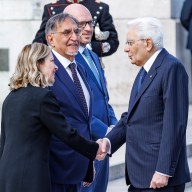While GTA residents were toughing out super-chilly conditions last week, I’ve been at a transport conference in relatively balmy Washington, D.C.
The talk of the town is how to cope with disruptions caused by the inauguration of U.S. president-elect Barack Obama.
At first, officials expected up to four million people to attend tomorrow’s inaugural parade and outdoor swearing-in ceremony. That estimate dropped quickly, although no one is certain how many will come.
Security and crowd-control measures will make it tough for downtown employees to get to work tomorrow. Major streets and bridges are to be closed and the Metro subway network — already badly overcrowded during normal rush hours — is expected to carry a record-breaking number of riders.
Alas, some Metrorail cars are as old as the 31-year-old subway system itself and break down regularly.
Nonetheless, Metro plans to operate rush hour service for 17 consecutive hours tomorrow and officials warn even that will not be enough.
Some subway stations will be closed outright and others will be entrance- or exit-only.
Commuter rail trains from adjoining states Maryland and Virginia are by reservation — and are sold out.
Despite worries the U.S. capital — no stranger to large public events — may be overwhelmed, let’s keep things in perspective. At a seminar last week, transit officials from India described a massive backlog in urban rail infrastructure.
Transit users in both Washington and Toronto may complain of crowded subways and commuter trains, but Mumbai — a metropolis of more than 20 million people — is only now building its first metro line. Suburban railway trains there currently pack 16 people into each square metre. Sixteen. They say you cannot move your arms.
Even today, many riders hang out the doors or sit on the roof. On average, 10 people die every day in Mumbai from unsafe riding or crossing in front of trains.
















